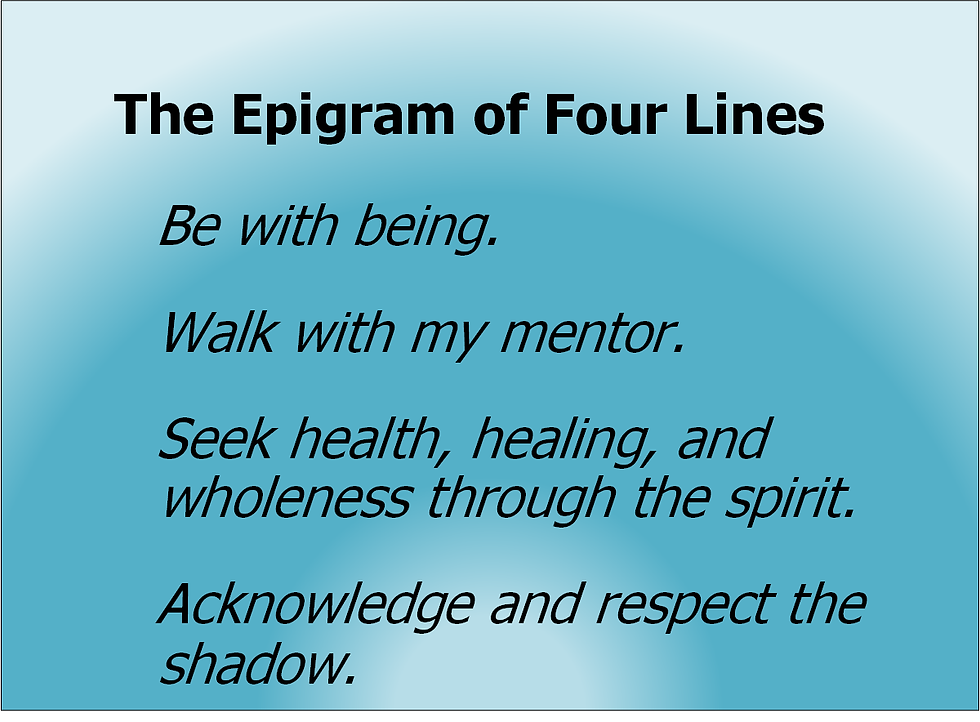Polyvagal Wisdom - Safety - Affect
- John P. Flynt, PhD
- Dec 7, 2024
- 4 min read
Updated: Feb 13
Evolution has led to a neurological complex that has upper and lower components. A simple illustration of this neurological configuration is an inverted Y. In the figure the neurological and respiratory foundation of the sense of safety is shown. The sense of safety begins with mindful awareness of breathing. With mindful awareness of breathing, it is possible to achieve a sense of being in which the feeling of safety can be reached and sustained. This begins with the sensation of air being drawn through the nostrils, into the throat, and into the lungs.

Neurological and Respiratory Foundation of the Sense of Safety
The two lower branches of the Y represent the older sympathetic and parasympathetic systems. The parasympathetic system has two branches. One is the ventral vagal. This is also called the social engagement system and is shown as the base of the Y leading up to the head. This system allows us to be mindful, to feel safety.
Then there is the dorsal vagal. This is shown as the branch going downward. It is the primitive parasympathetic system, which responds to fear and puts us to sleep or makes it so we appear dead.
The other lower branch is the sympathetic nervous system, which energizes us to flee or fight. The older branches (dorsal vagal of the parasympathetic and sympathetic) are not myelinated. It is as though they are wires without insulating sheaths. Their impulses are slow and more powerful than the social engagement system.
The stem on top—the ventral vagal branch of the parasympathetic system—is a more recent evolutionary development. It is characterized by very fine neurological links that are myelinated. They are like wires with insulating sheaths. This area includes the face, eyes, nasal passages, throat, and a link running down to the heart. Nerve impulses in this area are responsible for literally everything we regard as cultural or representative of higher human capabilities.
Regulation
Giving attention to air entering the nostrils and passing into the trachea, bronchi, and lower lungs immediately provides a way to reach the social engagement system. A sense of being emerges with such actions in which the body is in a condition of homeostasis. With respect to mental health, this is our optimum condition. Nothing needs to be added or taken away. With the cycle of inhalation and exhalation, the entire neurological system is brought into play. Neurotransmitters are introduced that establish a feeling for the wholeness of self—that the system is safe in its sense of self.
The social engagement system is oriented toward prefrontal cortex and a healthy state of the hippocampus. In other words, neuroplasticity is at work, new pathways are being created, and awareness remains optimized. We hear and can respond rather than react. Our state remains regulated, not dysregulated. The feeling of safety is a self-state that is visited when a steady, healthy cycle of breathing occurs. It gains value because as we learn to sustain it, we practice making it our default state. With enough practice, we can respond rather than react to pressures.
Dysregulation
The dorsal vagal parasympathetic nervous system is the oldest system, and it is what predominates in mammals, like mice, when you see them fall into a condition of appearing to be that of death. Under extreme stress, humans faint or dissociate. They lose conscious awareness. Such actions can be feigned, but in situations where stress is extreme, they occur automatically.
The sympathetic nervous system is younger than the dorsal vagal system and makes it so that we have a surge in energy. This is evident when people become angry and verbally or physically attack each other aggressively. It accounts for sexual urges. It also characterizes people who take off running without thought when they feel threatened.
People can live most of their lives in states dominated by dorsal vagal parasympathetic or sympathetic levels or neurological activity. This is affect. This is dysregulation. If someone is depressed, it is likely that the parasympathetic system has been engaged. They are tired or sleep extensively. If the sympathetic system is activated at a high level, then anger or anxiety can prevail. If someone goes back and forth tween sympathetic and parasympathetic, then the person might be experiencing a “bipolar” condition.
Affect Regulation
Th social engagement system (ventral vagal parasympathetic) enables us to work through mindful breathing and other activities to reach a state of regulation. While the environment can trigger us and bring states of affect, we can ourselves engage in activities that bring us a sense of safety. With self-regulation, we always have the power to change our self-state. This makes it possible to have significant control over whether the social engagement system can be sustained when high levels of effect are encountered—to be in a regulated state.
Sources
Thich Nhat Hanh, Peace is Every Step: The Path of Mindfulness in Every Day Life.
Stephen W. Porges, The Pocked Guide to The Polyvagal Theory: The Transformative Power of Feeling Safe.



